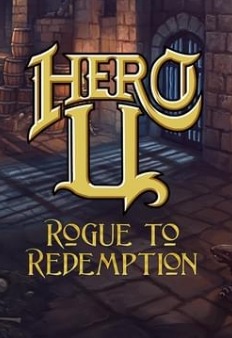Redemption was released for Microsoft Windows on June 7, 2000, with a Mac OS version following in November 2001. The game received a mixed critical response; reviewers praised its graphics and its multiplayer functionality but were polarized by the quality of the story and combat. It received the 1999 Game Critics Awards for Best Role-Playing game. It was successful enough to merit the production of a sequel, Vampire: The Masquerade – Bloodlines, which was released in November 2004 as an indirect sequel set in the same fictional universe.
Gameplay
Vampire: The Masquerade – Redemption is a role-playing game (RPG) presented primarily from the third-person perspective; the playable character is shown on the screen while an optional first-person mode used to view the character's immediate environment is available. The camera can be freely rotated around the character and positioned above it to give a greater overview of the immediate area. The game follows a linear, mission-based structure. Interaction is achieved by using a mouse to click on an enemy or environmental object to attack it or to activate it. Interaction is context based; clicking on an enemy initiates combat, while clicking on a door causes it to open or close.
The playable character can lead a group of three additional allies into battle, controlling their actions to attack a single enemy or to use specific powers. Characters can be set to one of three modes: defensive, neutral, or offensive. In defensive mode, the character remains distant from battles, while offensive mode sends the character directly into battle. The main character and active allies are represented by portraits on screen that reflect their current physical or emotional state, showing sadness, anger, feeding, or the presence of injuries or staking—having been stabbed through the heart and rendered immobile.
The player can access various long-range and melee weapons including swords, shields, bows, and guns, stakes, and holy water. Some weapons have a secondary, more powerful attack; for example a sword can be spun to decapitate a foe. Because they are vampires, allies and enemies are susceptible to damage from sunlight. Disciplines (vampiric powers) are used to supplement physical attacks. Each discipline can be upgraded, becoming a more powerful version of itself; alternatively, other in-game benefits can be gained. The game features disciplines that allow the player to enhance the character's physical abilities such as speed, strength, or durability. Disciplines can also allow the player to mesmerize an enemy or a potential feeding victim, render the character invisible to escape detection, turn the character into mist, summon serpents to attack enemies, heal, revive their allies, and teleport to a haven. Each discipline can be upgraded up to five times, affecting the abilities' durations, the scale of the damage or their effect, and the cost of using it. The characters' health and disciplines are reliant on blood, which can only be replenished by feeding on the living—including other party members—or finding blood containers such as bottles and plasma bags. Drinking an innocent to death and other negative actions reduces the player's humanity, increasing the likelihood of entering a frenzy when injured or low on blood, during which they indiscriminately attack friend and foe.
Completing objectives and defeating enemies is rewarded with experience points, which are used to unlock or upgrade existing disciplines and improve each characters' statistics, such as strength or agility. Weapons, armor, and other accessories can be purchased or upgraded using money or valuable items, which are collected throughout the game. The character's inventory is grid-based; objects occupy an allotted amount of space, requiring the management of the storage space available. A belt allows some items to be selected for immediate use during gameplay, such as healing items, without the need to access them in the main inventory. The first version of the game allows progress to be saved only in the main character's haven or safehouse; it automatically saves other data at specific points. An update to the game enabled players to save their in-game data at any point in the in-game narrative.
Redemption features an online multiplayer component which allows players to engage in scenarios together. One player assumes the role of the Storyteller, guiding other players through a scenario using the Storyteller interface. The interface allows the Storyteller to create or modify scenarios by placing items, monsters, and characters across the map. Character statistics, such as experience points, abilities, and disciplines, can also be modified. Finally, the Storyteller can assume the role of any character at any given time. These functions allow the Storyteller to dynamically manipulate the play environment while the other players traverse it.
Plot
In 1141 in Prague, crusader Christof Romuald is wounded in battle. He recovers in a church, where he is cared for by a nun called Anezka. The pair instantly fall in love but are restrained by their commitments to God. Christof enters a nearby silver mine to kill a monstrous Tzimisce vampire who is tormenting the city. Christof's victory is noted by the local vampires, one of whom, Ecaterina the Wise, turns him into a vampire to prevent another clan from taking him.
Initially defiant, Christof agrees to accompany Ecaterina's servant Wilhem on a mission to master his new vampiric abilities. Afterward, he meets with Anezka and refuses to taint her with his cursed state. At Ecaterina's haven, the Brujah tell Christof about an impending war between the Tremere and Tzimisce clans that will devastate humans caught up in it. Wilhem and Christof gain the favor of the local Jews and Cappadocians, who devote their member Serena to the Brujah cause. The Ventrue Prince Brandl tells the group that in Vienna, the Tremere are abducting humans to turn them into ghouls—servitors addicted and empowered by vampire blood. The group infiltrate the Tremere chantry in Prague, and stop the Gangrel Erik from being turned into a Gargoyle, and he joins them. Christof learns that Anezka, seeking Christof's redemption, has visited the Tremere and Tzimisce clans, and the Vienna Tremere stronghold, Haus de Hexe. There, the Tremere leader Etrius turns Erik into a Gargoyle, forcing Christof to kill him. Etrius reveals that the Tzimisce abducted Anezka.

















